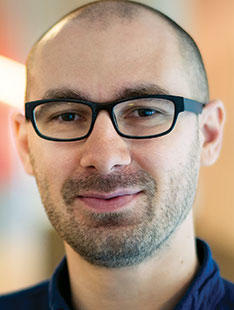Psychology: How Collective Memories Are Created
Collective memories are important for societies; they influence attitudes, decisions, and approaches to problems. But according to Alin Coman, assistant professor of psychology and public affairs, there’s little research on the mechanics of how collective memories are formed.

When two people talk about a piece of knowledge or past event, what they do and don’t discuss influences how each will remember it, says Coman. The elements that are discussed are strengthened in each person’s memory, and related elements that are not discussed get suppressed. “We know this operates at an individual level,” he says. “But what are the consequences ... at a larger social scale?”
So Coman and his colleagues assigned 140 study participants to computer-based communities of 10 people each. Participants first studied facts about fictional Peace Corps volunteers and then were asked to recall in writing the information they learned. Next, they had a series of brief, one-on-one computer-based conversations with three other participants in their communities and were told to chat about the information they’d studied. After the conversations, they recorded their individual recollections again.
The researchers tracked “mnemonic convergence,” or how many items were remembered or forgotten in common. They found that individual recollections after the networked conversations were more similar than recollections from before the conversations. They also found that the structure of the conversational networks influenced the degree of convergence. A network featuring more widely dispersed communication showed greater convergence than one where contacts were mostly limited to smaller subgroups.
Coman and his colleagues used computer-based communication because it is simpler and more efficient to study than in-person interactions. Face-to-face conversations also would likely be influenced by social cues like gender, race, and similarity among people in a way that computer-based chats were not.
The researchers hope the findings, which were published in July in the Proceedings of the National Academy of Sciences, might help policymakers spread important information about, for instance, symptoms and preventive measures during an outbreak of a contagious disease. Coman hopes next to investigate the conditions under which people come to believe accurate, and suppress inaccurate, information in public-health crises and also how emotions — not just facts —converge after discussions within a network.











No responses yet